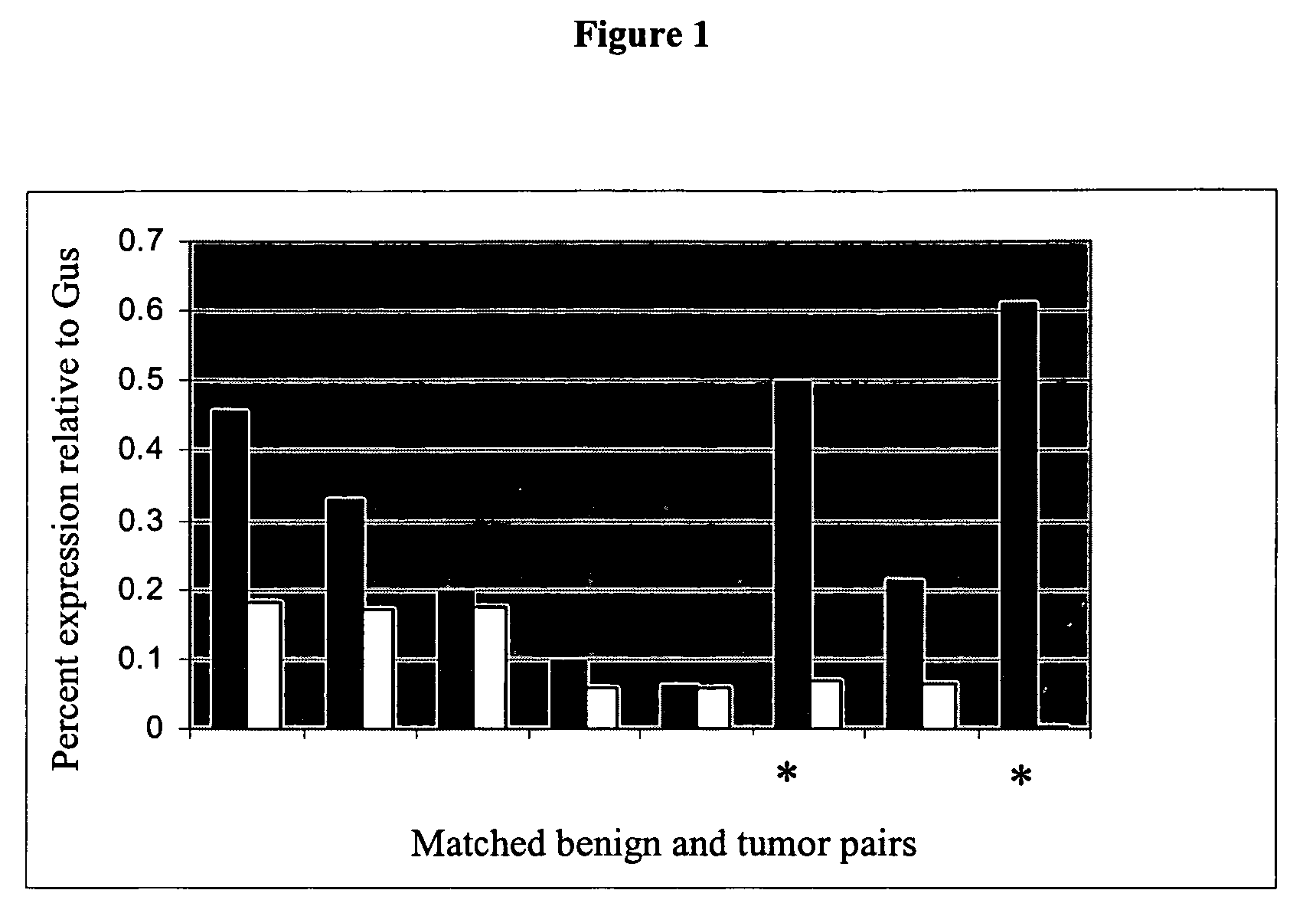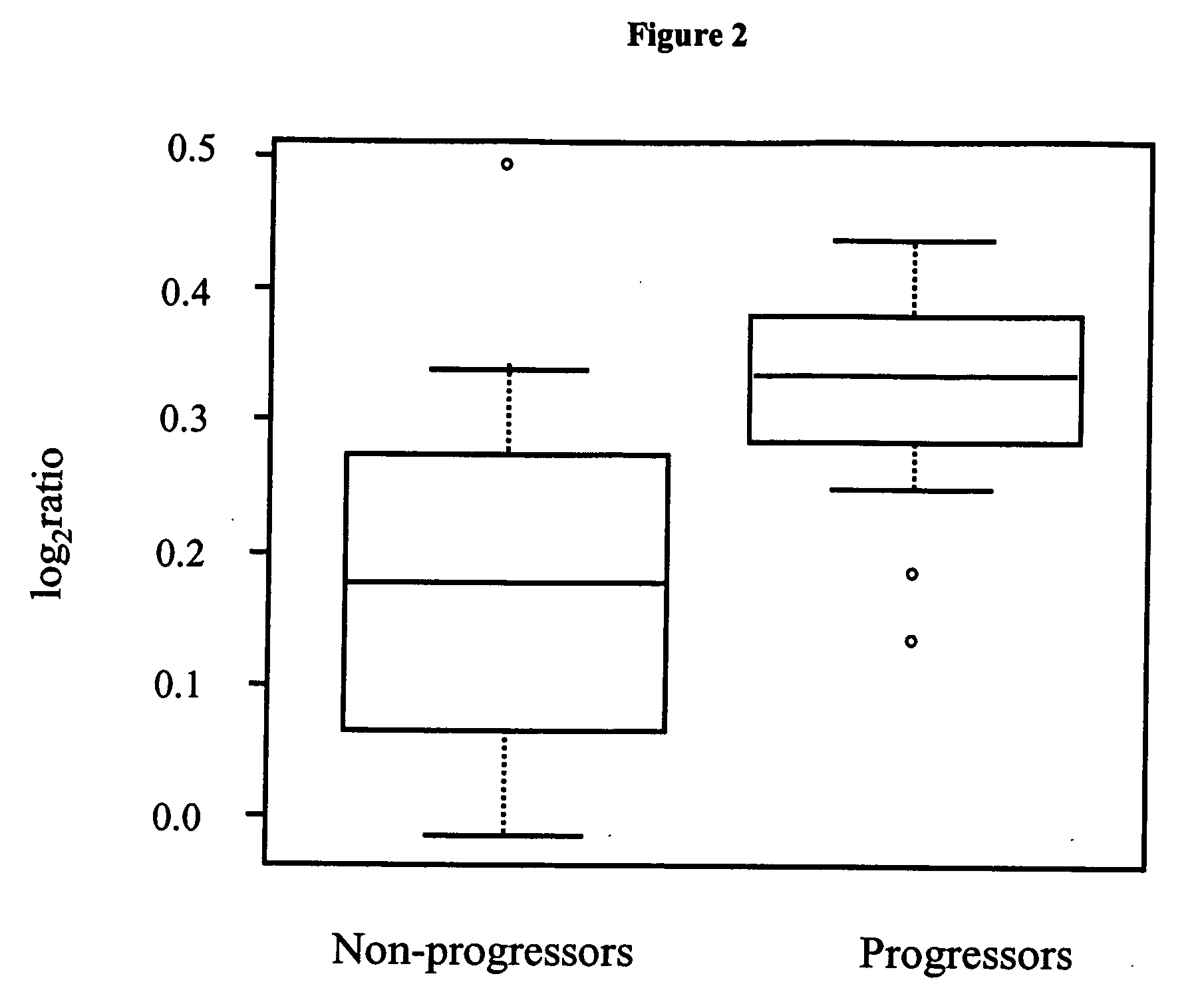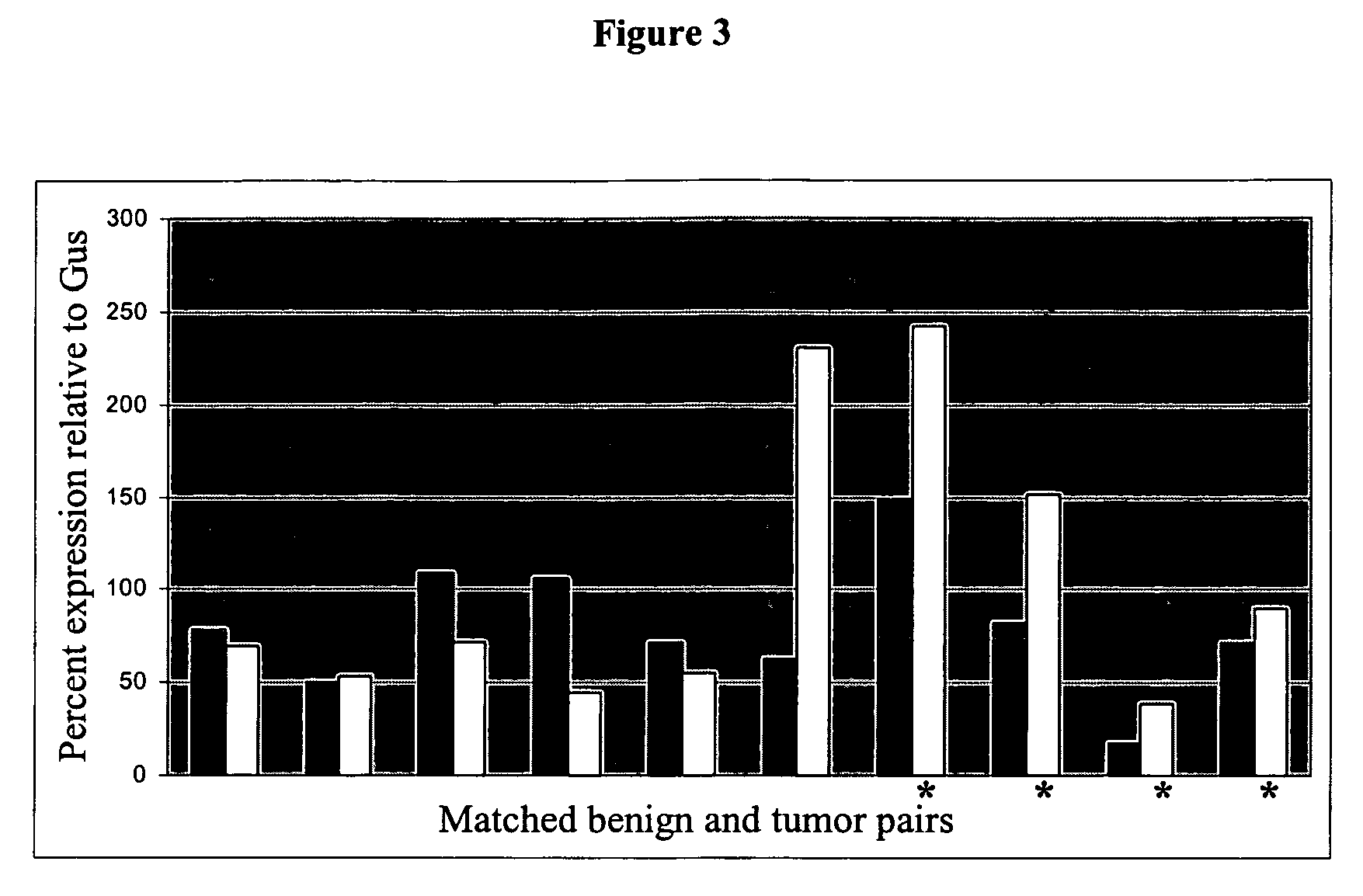Biomarkers for prostate cancer metastasis
a prostate cancer and biomarker technology, applied in the field of biomarkers for prostate cancer metastasis, can solve the problem that men with similar stage tumors often exhibit markedly different clinical outcomes
- Summary
- Abstract
- Description
- Claims
- Application Information
AI Technical Summary
Benefits of technology
Problems solved by technology
Method used
Image
Examples
example 1
[0130] Prostate cancer is the most commonly diagnosed non-cutaneous neoplasm among American males and is the second leading cause of cancer-related death. Prostate specific antigen (PSA) screening has resulted in earlier disease detection yet roughly 30% of men will die of metastatic disease. Slow disease progression, an aging population, and associated morbidity and mortality underscore the need for improved disease classification and therapies. To address these issues, we analyzed a cohort of patients using array comparative genomic hybridization (aCGH). The cohort is comprised of 64 patients half of whom recurred postoperatively. Analysis of the aCGH profiles revealed numerous recurrent genomic copy number aberrations. Specific loss at 8p23.2 was associated with advanced stage disease and gain at 11q 13.1 was found to be predictive of postoperative recurrence independent of stage and grade. Moreover, comparison with an independent set of metastases revealed ˜40 candidate markers ...
example 2
[0166] Risk assessment and counseling tools used to predict disease outcome in urology include nomograms and risk grouping models. Nomograms are scaled representations of statistical models defined by weighting significant predictors used to calculate the probability of a disease outcome. In contrast, risk grouping models use disease associated variables (e.g., prostate-specific antigen (PSA), Gleason grade, clinical stage) to assign outcome categories (e.g., high-risk, low-risk). Two of the most widely-used risk assessment tools currently available to predict biochemical failure after radical prostatectomy are a three-level categorization published by D'Amico et al. (D'Amico A V, Whittington R, Malkowicz S B, et al. JAMA 1998;280(11):969-74) and a continuous nomogram devised by Kattan et al. (Kattan M W, Eastham J A, Stapleton A M, Wheeler T M, Scardino P T. J Natl Cancer Inst 1998;90(10):766-71). Nomograms have better predictive accuracy than some extant risk grouping models (Katt...
PUM
| Property | Measurement | Unit |
|---|---|---|
| Tm | aaaaa | aaaaa |
| diameter | aaaaa | aaaaa |
| areas | aaaaa | aaaaa |
Abstract
Description
Claims
Application Information
 Login to View More
Login to View More - R&D
- Intellectual Property
- Life Sciences
- Materials
- Tech Scout
- Unparalleled Data Quality
- Higher Quality Content
- 60% Fewer Hallucinations
Browse by: Latest US Patents, China's latest patents, Technical Efficacy Thesaurus, Application Domain, Technology Topic, Popular Technical Reports.
© 2025 PatSnap. All rights reserved.Legal|Privacy policy|Modern Slavery Act Transparency Statement|Sitemap|About US| Contact US: help@patsnap.com



